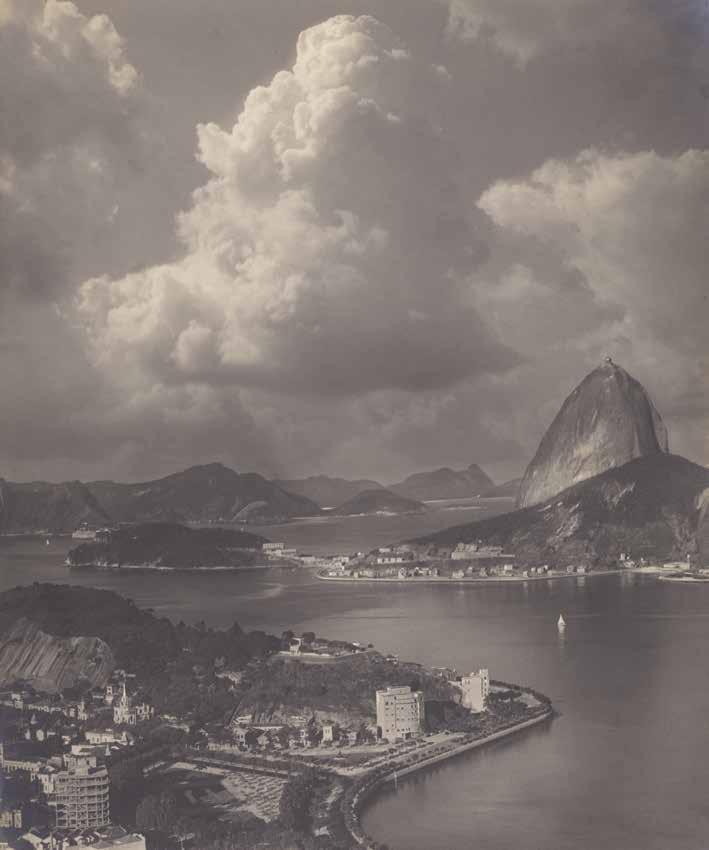

ALFRED BUCKHAM (1879–1956) was a daredevil photographer. A maverick of early aviation, he created his own unique style of photography by combining daring exploits in the air with innovation in the darkroom. The phenomenal story of his aerial photography begins in Scotland and culminates with an epic expedition across South America.
Reflecting in the New York Times Magazine on his various mishaps and near-misses, Buckham recalled: ‘But such unpleasing circumstances are mostly forgotten, or only serve to add spice to the remembrance. Ah! One was a rare daredevil in those days!’1
Born in London in 1879, Buckham spent much of his early career teaching photography. He became a fellow of the Royal Photographic Society in 1913 and by the First World War was an experienced lecturer.2 On joining the Royal Naval Air Service (a precursor to the Royal Air Force) in 1916 he was initially deployed teaching young recruits the basics of photography.3 Requesting a transfer to active service, Buckham began his own aerial reconnaissance career based at RAF Turnhouse,
5. Alfred Buckham’s aeroplane hanging in a tree after a crash during the First World War, unknown photographer, 1916, gelatin silver print, 9.2 × 11.6 cm. collection of richard and John Buckham
6. Alfred Buckham wearing goggles, unknown photographer, c.1918, gelatin silver print, 29.5 × 20.5 cm. collection of richard and John Buckham
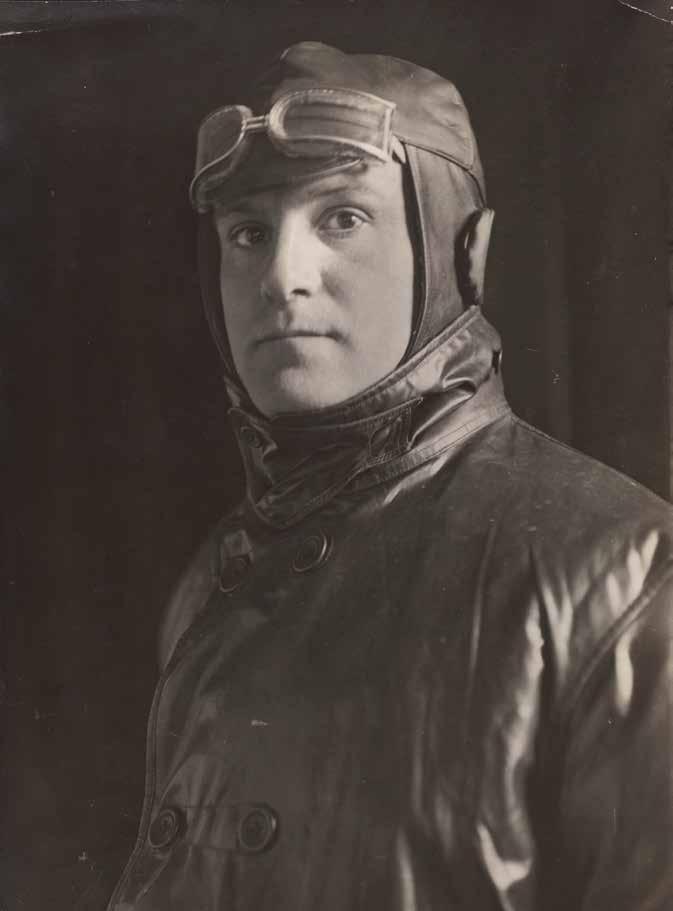
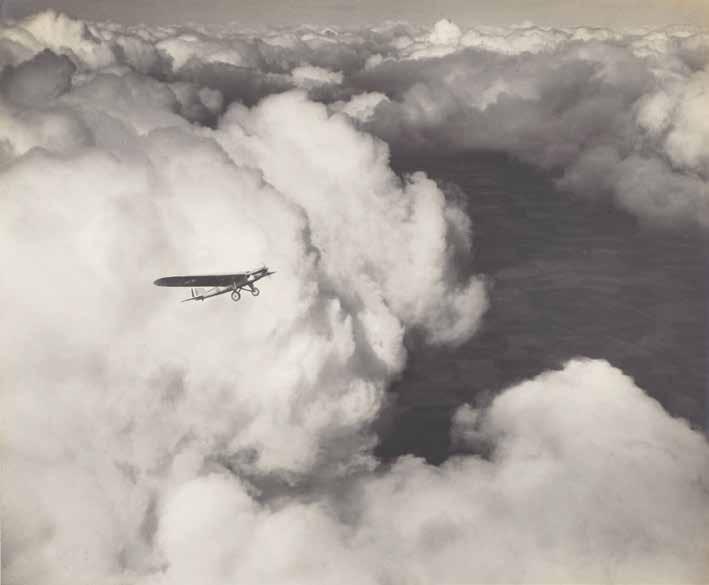

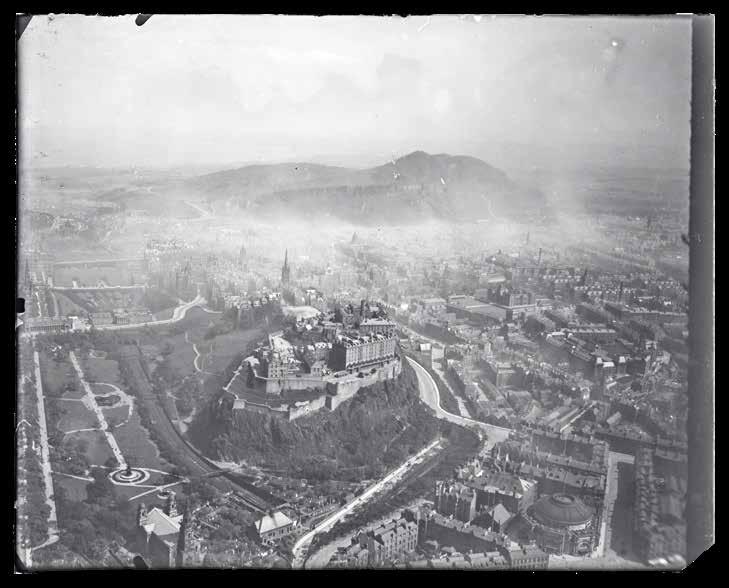
35. Edinburgh Castle, c.1918, glass plate negative (positive reproduction from the original negative), 10 × 12.5 cm. national Galleries of Scotland. Purchased from richard and John Buckham 2019.
36. Clouds, c.1918, glass plate negative (positive reproduction from the original negative), 13 × 18 cm. national Galleries of Scotland. Purchased from richard and John Buckham 2019.
37. Aeroplane, c.1918, glass plate negative (positive reproduction from the original negative), 10 × 12.5 cm. national Galleries of Scotland. Purchased from richard and John Buckham 2019.
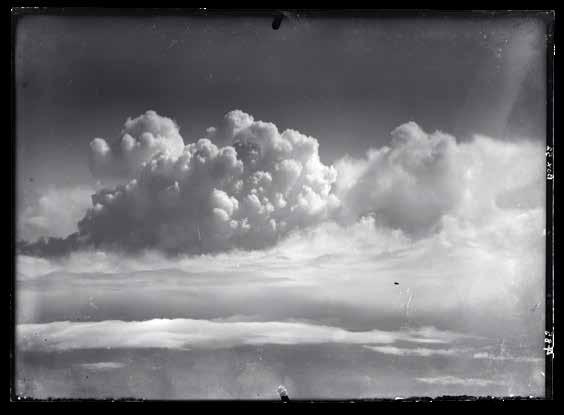

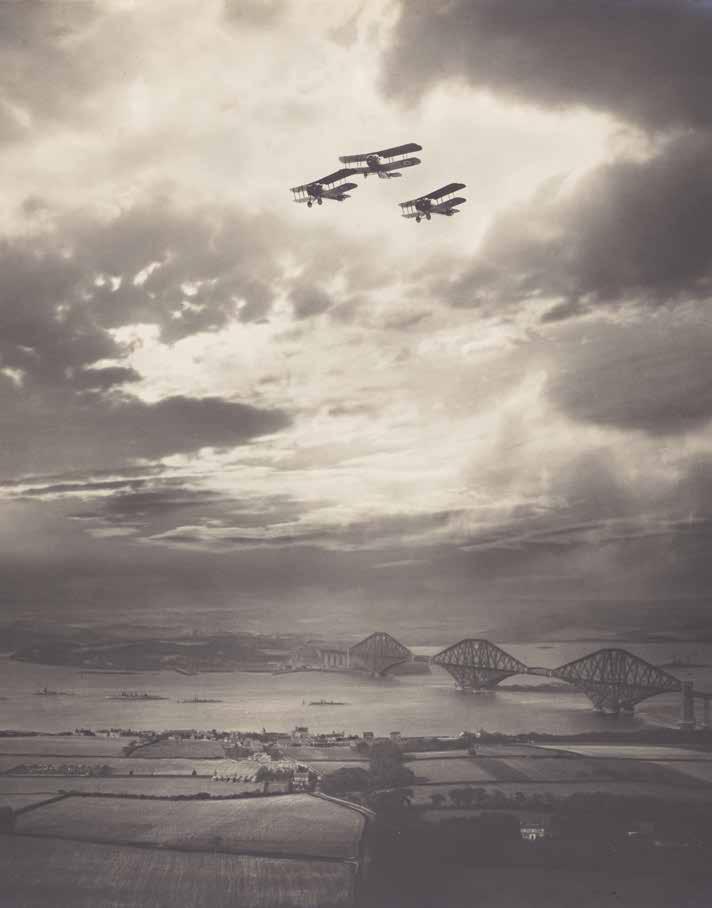
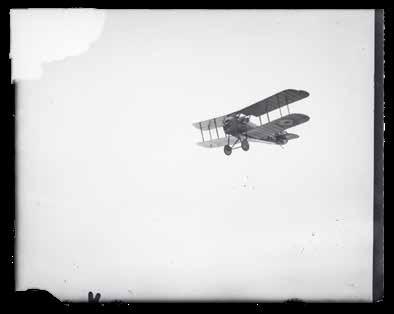
identified a light area of the print to add the aeroplane and used a pin mark to help him expose the negative in the right position. He would also have used an enlarger to match the scale of the aeroplane to the landscape, making the scene appear realistic.
All of these aeroplanes were photographed on the ground, as it would not have been possible to photograph a moving aircraft from a similarly speedy vehicle. Buckham wanted it to appear that these aeroplanes were in flight, so on occasion he painted in the dents on the bottom of the wheels that gave away that the aeroplane was still in the airfield.
To allow him to reuse negatives, Buckham rarely edited them by scratching out or filling in areas, as was common for photographers using glass plates. Instead, he made all of his final adjustments in the print. In the Edinburgh photograph he uses black watercolour to enhance the contrast between the brooding castle and the rest of the city, and scratches back to the white paper to show the light glinting on key landmarks. This final stage of the process ensured that every photograph is unique.
Buckham’s method of composite photography meant that several versions of the same scene could exist. Auld Reekie (39) also takes Edinburgh as the basis for the final print, but the city is paired with a different set of cloud formations. The other notable difference is the absence of the aeroplane in Auld Reekie, which shifts the scene from dynamic to pensive.
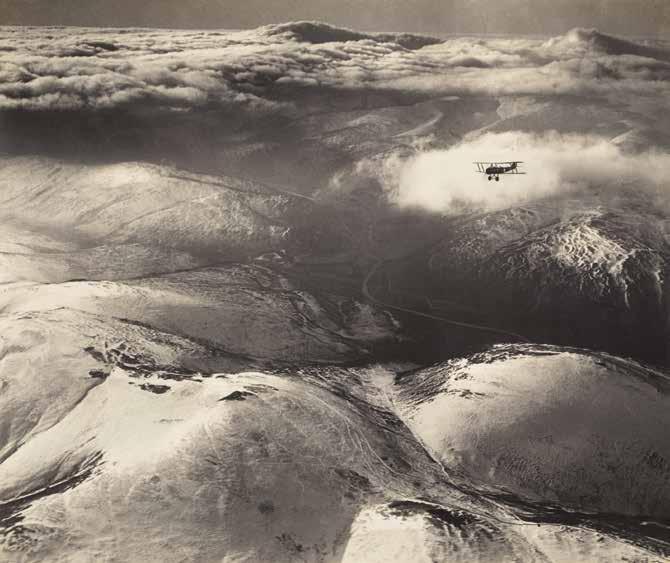
engineering appears in numerous pictures, photographed from a variety of angles and at a range of distances. Its distinctive shape added unrivalled drama to the landscape and allowed Buckham to make a visual connection between the transportation innovations of the previous century and the modern world of aviation that he inhabited.
The same negative of the bridge, looking north towards Fife, was used as the basis of several prints including The Forth Bridge (46). To ensure the detail of the bridge’s pioneering cantilever design was not lost in the final print, Buckham strengthened the appearances of the trusses with black paint. This negative was also used to produce a Christmas card for RAF Turnhouse in 1918 (54). Showing an aeroplane flying towards the Forth Bridge, this is probably one of the first composite photographs Buckham created.
56. Morning over the Moorfoots, c.1920, gelatin silver print, 38.3 × 46 cm. national Galleries of Scotland. Purchased with art Fund support, 2008
57. Sunset over the Pentland Range, c.1920, gelatin silver print, 46 × 38 cm. national Galleries of Scotland. Purchased with art Fund support, 2008





I carried a medical certificate supplied by a remarkably prescient doctor, who, for the inadequate sum of ten dollars, was able to affirm, without seeing me, that I had been vaccinated within the last three months and was entirely free of a whole list of terrible diseases. Surely the most respectable among South American Republics could not deny facilities to such a well certified aerial photographer.5
Before leaving New York, Buckham took the opportunity to photograph the newly completed Empire State Building (62). To ensure it appeared suitably majestic on the New York skyline, he scratched back to the white paper to emphasise where the light hit the highest part of the skyscraper. Leaving America in a hired aeroplane via the mud flats of Georgia and sunny Florida, he headed over the Gulf of Mexico to Cuba, encountering his first whale en route.6
The first place on the journey to really capture his interest was the Caribbean island of Saba (65). He made extensive notes about this volcanic land mass in his journal, marvelling at the ingenuity of the Dutch population who made boats in the crater and used ropes to lower them 800 feet to sea level.7 From there, he flew over British Dominica and the tempestuous Mount Pelée volcano of Martinque, which buried 30,000 nearby inhabitants in 1902.8
Following the path of the Amazon, Buckham’s journey continued in a ‘flying boat’ (67). These aircraft, such as the Pan-American Air Mail
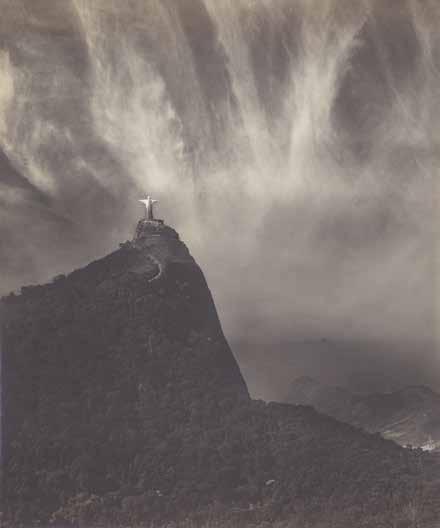
was broken.’11 To add insult to injury, on landing his negatives were subject to intense scrutiny, with military personnel demanding to inspect prints of the images before he was permitted to leave the country. This was a pattern that was repeated throughout his journey, with his camera taped up with ‘commendable zeal’ on arrival in Chile until permission to photograph was granted.12
The next challenge was to cross the Andes (73). Never one to be fazed, Buckham took a pragmatic approach to the dangers of flying at such high altitude with his disability:
Then for the first time in my flying experience, even at greater heights, I began to feel the effects of altitude. Higher we climbed to 18,000ft, my pilot taking oxygen. He passed the tube back to me, but owning to certain physical disabilities I could not use it. Struggling for breath at 19,500ft, I realised that unconsciousness was inevitable, as no attempt could be made
